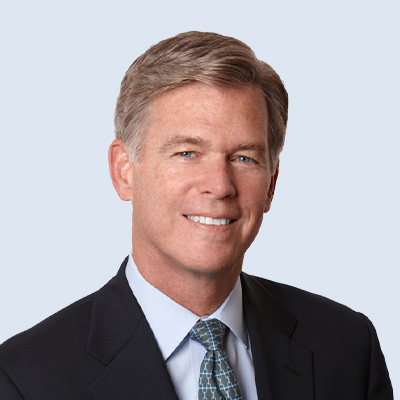Gary Tubridy: Hello. Gary Tubridy here, senior vice president with the Alexander Group. I’m here with Lori Tierney of Johnson and Johnson, vice president of commercial operations North America for MD&D. Lori, welcome to the forum. Great to have you here.
Lori Tierney: Thank you, Gary. Appreciate you having me.
GT: So, tell me about your role and responsibilities as a vice president of commercial operations.
LT: So my main function really is a true strategic support function for field sales. I support commercial in other ways, mainly the management structure, the GMs for each of our different businesses, but we’re about 17 unique businesses. Wonderful therapeutic areas, cardiovascular and orthopedic, neurovascular, general surgery, specialty surgery. It’s a big job, and my goal is to support every single member of the field sales organization.
GT: Medical, like so many industries, has undergone a rapid and significant change in recent years. Tell me a little bit about the customers for medical devices and how they’ve changed in recent years, in terms of who they are, and what they demand.
LT: I’d say the key customer remains consistent in the surgeon. Generally speaking, the customer profile has expanded, because, beyond the surgeon, it’s clearly everyone involved in the surgical suite, materials management, C suite level engagement as it relates to the financials within a hospital. And then based on the different channels that we support, inside and outside of the hospital, there are all sorts of financial intermediaries that are really emerging in terms of customers, whether it’s organized customer groups, whether it is independent delivery networks, ambulatory surgery centers. The customer focus has expanded, but our key customer, for our field sales organization, remains the surgeon and they’re supporting the surgical suite.
GT: So the surgeon remains key. We’ve just overlaid a little complexity on top of that. And their demands might be different. Surgeon wants efficacy, but other people would demand other things about their products.
LT: Definitely. I’d say the surgeon conversations remain clinical in nature, and that’s how it should be because their chief focus is clearly outcomes with respect to patients. I think some of the other ancillary folks that support the actual surgery itself, clinical, anything involving the business, the conversations are very varied. The requirement for even our field sales organizations, financial and business acumen, has really had to be elevated on the basis of contracting requirements.
GT: Yeah, so how have all of these changes affected the sales organization and the sales job that are deployed to meet the needs of these various customers?
LT: Most sales organizations, across many industries, you have your demand generators; we call them sales consultants. And then there’s your frontline management, and then extended upstream sales management. I think that the focal point for each of those roles has changed. Our goal is to try to keep things simple so that we can enable the sales consultant to absolutely do their job, which is generated as much demand for our products based on appropriate patient need, and the customer engagement models that they literally have built over time with our core surgeons.
GT: Tell me what tools are central to the sales organization?
LT: I’d say a CRM is the most critical tool, because that’s where both sales reporting comes out of, and incentive compensation tracking comes out of. I’d say, in certain, of our sales forces that are very inventory dependent, there are additional tools, additional applications that support certain kits, and/or certain implants, et cetera, that need to be where the surgery is happening. That would be the second most critical tool.
GT: This happens in some businesses, and my question is, is there a tendency sometimes to tool proliferation?
LT: There are tools that really enable the day-to-day work. And then there are tools that are just required as part of the way Johnson and Johnson works. There are financial management tools like Concur, there are HR management tools like Workday, there are inventory management tools. There are CRM related tools, that are scheduling related tools, internal education, external education. So, your question is a great one, and I think it’s a challenge for many. How do you ensure that when you think about application utility, you’re looking at it in the most broad sense? On the basis of tracking, what does a sales consultant do? And what do they need to be most effective to do their job? And what does a good employee of any company need in order to maintain that connection to the company?
GT: So what’s your philosophy in terms of this balance of simplicity versus the tools needed to do the job? How do you rationalize or curate the number of tools that the salesperson is expected to use?
LT: So, we’ve done a lot of work within commercial operations and across the GMs, with and through the GMs of the business, and their senior most sales leaders, and really appreciating from a field input perspective, what do they need to do their jobs? What would they like? And anything that comes in from the field, that is a desire of sorts, is something that we look to retrofit within existing tools. I think if you look at it from a macroscopic to microscopic perspective, with the role type in mind, you’ve got a much better chance of controlling the madness. We’ve got some very, very bright people who are responsible for unique aspects of our business, be it across sales, being it across marketing, be it across global education services, any other function. And these are bright people that are looking for solutions to singular problems. I think our best bet is to look for broad solutions that can accommodate multiple opportunity sets for the field sales force.
GT: Best piece of advice you can offer to an executive, who’s trying to get a handle on the tools that are being deployed in their sole sales organization and get them more harmonized?
LT: It’s interesting. I’ve never liked that expression, “Pause before moving forward”, because I love the whole notion of positive progression and momentum. When you’re looking at what it really takes to support a field sales force, get as much into the detail as you possibly can. When you know what the original intent of a given tool was, and you know what the practical application of the tool is, I think you have to map all of it before you can create a fully integrated system and approach for support. I work with incredibly talented people. And the simplistic problems of yesterday are far more complex today. So the simplistic solutions of yesterday have gotten far more complex today. So our goal is to simplify the complex.
GT: Outstanding. Lori, thank you for joining us today.
LT: My pleasure.
GT: Really appreciate your time.

